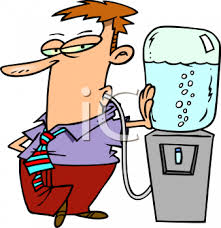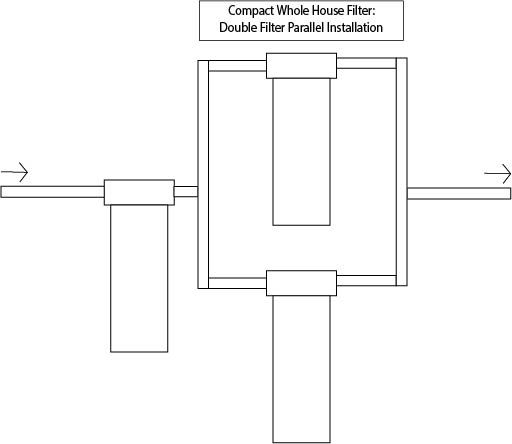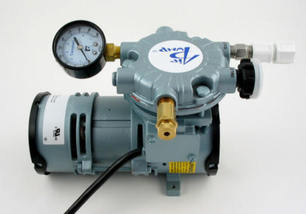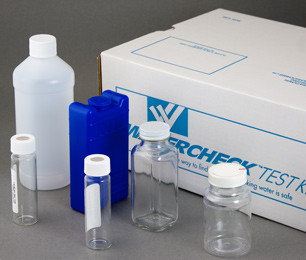Pure Water Occasional. June, 2025
|
In this early summer Occasional you'll hear about absolute and nominal micron ratings for water filters, the best fluids to hydrate your body, the lifespan of water filter cartridges, how to cope with boil water alerts if you have a whole house water filter, the sad fate of glaciers, a crypto outbreak, the hazards of eating fish caught in PFAS-contaminated waters, a scary diesel spill in Baltimore, the salmonella threat posed by cucumbers grown in areas with contaminated water, elephants killed by polluted water, National Hydration Day, sky-high PFAS contamination in a Swedish town, the threat of arsenic in water to expectant mothers, whole house cartridge filters, aeration for well water, where to get a high-quality test for your home's water, and, as always, there is much, much more.
Thank you for reading, and sincere thanks from Pure Water Products for your continuing support. |
|
Thanks for reading!
Please visit the Pure Water Gazette, where you will find hundreds of articles about water and water treatment, and the Pure Water Products main website, where there is much information about water treatment and specific information about the products we offer. On both of these information-rich sites, pop-up ads and other distractions are not allowed.
|
Pure Water Gazette Technical Wizard Pure Water Annie Answers All the Persistent Questions about Water Treatment.
Nominal vs. Absolute
If you’re puzzled by what filter makers mean when they call their filters “absolute” or “nominal,” technical wizard Pure Water Annie will clear the matter up for you.
Water filtration devices are rated by the sizes of particles that will pass through them. The ratings are normally expressed in microns.
Micron ratings are applied to all types of filtration devices, including even granular filters. It is said, for example, that a sand filter is roughly a 10 micron filter, meaning that it filters out particles ten microns and larger in girth. Carbon block filters are also assigned micron sizes, but micron ratings are most meaningful in comparing sediment filters.
The micron is a standard measure of size that is used by filter makers. The diameter of a human hair is about 90 microns. Sediment filters are used to catch particles 1/300 of that.
Most sediment filters are given ratings by their manufacturers that describe their effectiveness at removing particles down to a specified size. The most common of these are ”nominal” and “absolute.”
Nominal, according to the Water Quality Association (WQA), means that the filter will filter out at least 85% of the particles of the size it is rated for. In other words, a filter that is rated as a 1 micron nominal can be expected to pick out 85% of the particles that are 1 micron or larger from the water that passes through it.
Absolute, theoretically, means that the filter will reject virtually all of the particles of the given size. The usual expectation is a 3-log rejection–or 99.9%. Absolute ratings are usually used for the tightest filters and for purposes where efficiency really matters. For example, if a filter maker promises removal of E. coli, more or less 85% efficiency isn’t good enough. If you’re going to trust your life to the filter, you expect an absolute 3-log or 4-log rating at the very least.
The problem with the absolute vs. nominal system is that there is really no universal standard that assures uniformity. Some makers of filters for non-critical applications, for example, might consider 70% rejection suitable for a nominal filter. Definitions vary from one manufacturer to another, and there is really no way for the end user to verify the claim.
For most common filtration issues filters rated as “nominal” are used. For example, a nominal 5 micron sediment filter is a standard size used in much residential water treatment.
Keep in mind that tighter is not always better. The lower the micron rating of a filter, the more it restricts flow. An absolute 1 micron filter is normally not a good choice for a residential whole house sediment filter because there will be too much pressure loss. If you put in a filter to remove sand, a filter with a low micron rating is not only unnecessary, but it will also become clogged much faster than a looser filter.
|

Water News for June 2025
40% of Glaciers Are Doomed
Almost 40% of glaciers in existence today are already doomed to melt due to climate-heating emissions from fossil fuels, a study has found. The loss will soar to 75% if global heating reaches the 2.7C rise for which the world is on track. The massive loss of glaciers would push up sea levels, endangering millions of people and driving mass migration. The Guardian.
Crypto Outbreak in Devon
BBC reported that in Devon a cryptosporidium outbreak, which contaminated the local water supply and lead to hospitalizations and more than 100 reported cases of illness, caused significant financial loss to the water supplier. BBC.
Do Not Eat Warnings for Fish in Michigan
Amid evidence that PFAS is far more dangerous than previously thought, state officials have revised statewide guidelines for eating contaminated fish.
Michigan health officials have dramatically reduced the amount of PFAS-tainted fish they consider safe to eat, tripling the number of water bodies where anglers are warned against eating their catch.
Ninety-eight water bodies are now subject to “do not eat” advisories because fish are contaminated with the so-called “forever chemicals,” up from 33 last year. Hundreds more advisories suggest that Michiganders limit meals of certain fish species to anywhere from 16 servings a month to six a year.
Officials with the Michigan Department of Health and Human Services announced the change Monday while publishing the annual Eat Safe Fish Guide, a document that identifies waterways where fish are contaminated with unsafe levels of toxic chemicals. Bridge Michigan
Diesel Spill in Baltimore
A leak of some 2000 gallons of diesel at Johns Hopkins Hospital in East Baltimore traveled through storm drains for more than a mile to the harbor. The impact on drinking water quality is still unclear. Newsweek
Salmonella Traced to Cucumbers Grown in Contaminated Irrigation Water
A salmonella outbreak tore through the country last spring and summer, infecting more than 550 people and sending 155 to the hospital.
The likely culprit wasn’t raw eggs or undercooked chicken but an innocuous salad staple: cucumbers.
One year later, cucumbers are once again making people sick — and federal officials say that one of the same Florida farms is once again involved. Forty-five people in 18 states recently contracted salmonella in an outbreak linked to cucumbers from Bedner Growers in Palm Beach County, setting off a widespread recall that has affected everything from California rolls sold at Target to banh mi sandwiches served at a North Carolina high school.
The Food and Drug Administration has yet to explain how the cucumbers linked to the current outbreak became contaminated; the investigation is ongoing. But last year, the agency found that Bedner Growers had used untreated canal water for irrigation — and that the water was contaminated with one of the salmonella strains that had made people sick.
Cucumbers and other fresh produce may be a surprising source of salmonella, which can cause diarrhea, stomach cramps and fever, as well as more serious health problems that can turn fatal. Heat from cooking can kill the bacteria, but fruits and vegetables that are eaten raw, like cucumbers, can be unsafe once they are contaminated. That means it’s particularly important to protect fresh produce from pathogens lurking in water used for irrigation or washing. NBC News.
Contaminated Water Blamed for Elephants’ Death
The unexplained deaths of hundreds of elephants near watering holes across the Okavango delta in May 2020 alarmed conservationists. Nearly five years later, scientists finally published a paper indicating what they believe to be the reason behind the deaths: toxic water caused by an algal bloom. The Guardian
National Hydration Day
National Hydration Day was June 23. As far as we can determine, not a single business or government office anywhere closed to honor the holiday.
The World’s Worst Case of PFAS Contamination
Water Treatment Employee Dies in Water Tank
In Ottawa County Ohio, a water treatment employee was found dead inside a water tank, prompting a boil advisory in multiple areas in the state.
According to WTOL, citing a report from the Ottawa County Sheriff’s Office, authorities responded to the Ottawa County Regional Water Treatment Plant on Monday and discovered a night shift employee floating face down in a tank filled with water. WKRC – TV
Expectant Mothers Advised to Drink Filtered Water
Pregnant women have been advised to use water filters by experts who spoke to Newsweek after a study found levels of arsenic in water systems considered safe are impacting birth outcomes.
A national study led by researchers at Columbia University evaluated risks from 13,998 pregnancies across 35 cohort sites participating in the National Institutes of Health’s Environmental influences on Child Health Outcomes (ECHO) program, and published its findings on the medical journal site JAMA Network last week.
The researchers discovered that prenatal exposure to arsenic was associated with a higher likelihood of babies being born preterm with lower birth weights, factors that they said are important “predictors of infant mortality and morbidity across the life span.”
This was the case even at the level of exposure the Environmental Protection Agency (EPA) currently deems safe, 10 micrograms per liter, a regulation that was established in 2001 and has not been changed since. Newsweek. Full article.
|
Basic Heavy Duty Whole House Cartridge Filters
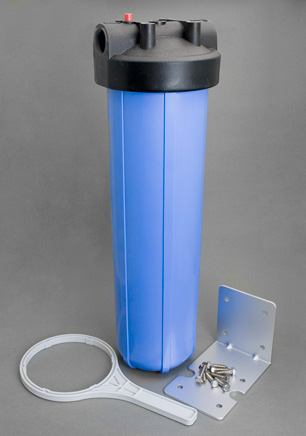
Tough, versatile 20-inch “Big Blue” housings can be used alone or in a
variety of combinations to meet virtually any “whole house” filtration
situation. They are simple, durable, easy to install, and easy to
service. They use standard-sized cartridges so replacements are easy to
find.
Parallel installation, as pictured below, make them suitable for
even large homes. Installing in parallel greatly reduces pressure loss,
enhances the effectiveness of the unit, and extends the life
expectancy of the cartridges.
Cartridge filters are much easier to maintain than tank-style
filters. As for installation, they are compact in size and do not
require electricity or connection to a drain. Most require only an
annual cartridge change, which can usually be done by the homeowner.
The chart below shows sizing suggestions for whole house filtration for water that is treated with chlorine or chloramine. Chloramine units require more expensive cartridges than than the unit treating chlorine.
|
Description
|
Application
|
To Determine Pricing
|
| System 1. One 4.5″ X 20″ 5 micron sediment filter plus one 4.5″ X 20″ high performance carbon filter. |
Homes with 1 to 3 people. Flow rates to 5 gpm. |
Price is the same as WH103 on this page. |
| System 2. One 4.5″ X 20″ 5 micron sediment filter plus two 4.5″ X 20″ carbon filters installed in parallel. |
Homes with up to 5 people. Flow rates to 10 gpm. |
Price is the same as one WH103 and one WH102 on this page. |
| System 3. One 4.5″ X 20″ 5 micron sediment filter plus three 4.5″ X 20″ carbon filters installed in parallel. |
Homes with up to 8 people. Flow rates to 15 gpm. |
Price is the same as one WH103 and two WH102 on this page. |
Basic Housing and Bracket Setup. The Housing is available for
3 pipe sizes–3/4″, 1″, or 1.5″. This very versatile “Big Blue” housing
will accept any standard 4.5″ X 20″ cartridge. It can be used for
sediment cartridges, carbon cartridges, or “media” cartridges for
special purposes like iron removal or pH increase.
Basic Parallel Arrangement for Sediment Filter followed by two Carbon Filters installed in parallel. This arrangement increases service flow rate, extends cartridge life, and greatly increases effectiveness.
|
|
Aeration Overview
Aeration is an effective chemical-free method of preparing well water
containing iron and hydrogen sulfide for filtration. Exposure to air
“oxidizes” the contaminant to a filterable form (ferric iron or
elemental sulfur), then an appropriate filter removes the contaminant
from the water.
Closed tank aeration for residential treatment is available in
several formats. The least expensive, though not necessarily the
simplest, uses a small venturi that is installed in the water line
itself in front of the well’s pressure tank. As water fills the tank,
air is literally sucked into the water stream via the venturi. A small
treatment tank where “oxidation” occurs follows the pressure tank. The
water then goes to a free-standing filter for final filtration.
A much more aggressive treatment uses a small air compressor, or “air
pump,” that injects air into a treatment tank. When water enters the
tank it falls through a pocket of compressed air where rapid oxidation
occurs. The water then passes on to a filter tank for final removal of
the contaminant.
A Small Compressor Powers the “AerMax” System
Single tank units are the simplest form of aeration treatment. Single
tank systems perform the aeration and filtration in a single tank.
Water enters the tank, falls through a pocket of compressed air, then is
filtered by the media contained in the lower 2/3 of the tank. Single
tank units need no pump; they bring in air during the nightly
regeneration performed automatically by the control unit.
More Information
PWO0721
Water Tests for Your Home
The exceptional value of a good water test and how to understand what it means
For some years we been offering high quality water tests to our customers provided by National Testing Laboratories of Cleveland. General information and pricing for these excellent tests can be found here on our website.
The lab offers a comprehensive test (Watercheck) as well as specific city water and well water versions. A number of individual analytes not included on the standard tests (iron bacteria, for instance) can also be added if needed.
How It Works
The test is ordered from our website. Upon receipt of the order, we send you a test kit. You then take samples of your water, as directed in the kit, and overnight the samples to the NTL laboratory in Cleveland. The lab reports the results to you in an easy-to-understand format and also sends us (Pure Water Products) a copy of the results so we can help with interpretation and recommendations for treatment if you ask us.
The lab also makes available valuable online information to help with understanding the test result. Here are a couple of valuable reference guides provided.
A comprehensive chart giving detailed information about water contaminants such as commons sources of the contaminant in drinking water, the allowable amounts, the treatments required for removal with very helpful color coding for classification of the contaminant.
An informative brochure telling how to deal with water issues revealed by testing.
Please visit our website for more information:
|
Places to visit for additional information:
|
|
Pure Water Products, LLC, 523A N. Elm St., Denton, TX, 76201. www.purewaterproducts.com. Call us at 888 382 3814, or email pwp@purewaterproducts.com. |
|
|  | |




